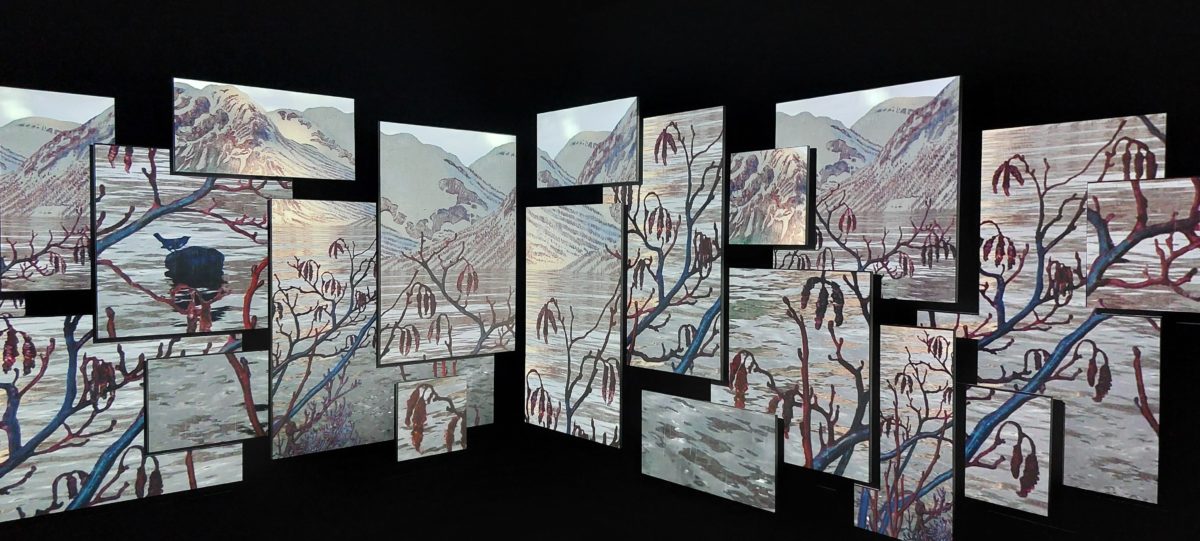As the use of travel hubs evolves and they become increasingly integrated within urban networks, the use of art and art installations has taken on a significant role in offering community interaction and sense of place. Art adds human perspective and creates restful focus points. Here Peter Farmer, Design Director and Benoy's Aviation lead, explores how art can inspire, amuse, entertain and make an airport’s operational and commercial spaces more aesthetically pleasing.
Return to Future ThinkingArt and airports - creating space for reflection during the airport journey


Art in transport environments is not a new phenomenon. It has been part of the public travel environment from the earliest days and has influenced and crossed the boundary into architecture influencing building design, as well as being integrated within in the overall design. Art has been used to perform many functions, from encouraging travel, enhancing and humanising spaces, providing landmarking and wayfinding, to offering platforms for political statements and public relations messaging.
So many of our conversations touch on creating something unique, a single or series of ‘wow’ moments, something memorable and ‘Instagrammable’. There are many examples where art has been used in this context. However, as designers, we advocate for the consideration of a wider programme of cultural engagement. As part of our aviation work, we are currently in discussion with a number of airports regarding the potential of integrating art programmes into their terminals.
(Pictured left — an art installation at Stavenger Airport, Norway)
Transport hubs are transient spaces that offer a moment between places, people, cultures and experiences. They are spaces of potential where passengers may be feeling more reflective and perhaps open to new ideas. They can provide an ideal opportunity to connect with new thinking or ideas. The interaction may be momentary or immersive, but having that single experience can in turn create positive associations with the travel experience in that particular location.
'Art has been used to perform many functions from encouraging travel, enhancing and humanising spaces providing landmarking and helping wayfinding and as political statements and public relations functions.'

Our approach to passenger environments including airport terminals must be a holistic one to create coherent spaces where all the components from passenger processes, welfare, seating, wayfinding and information, commercial branding advertising and media are balanced and optimised to ensure passenger comfort and satisfaction.
How and where pieces are placed requires not just care from a practical point of view but also consideration of how a piece sits within its context. The act of positioning a piece within a space requires skilful understanding of form, values, scale, volume, surface, and space. How will the piece appear to people, does it require a plinth or some kind of dedicated space?
(Pictured left — Bergen Airport, Norway)
Art in airports is not a new idea. Schiphol airport is possibly the most referenced with its private collection as well as links to The Rijksmuseum. Other examples include the ‘Slipstream’ sculpture at Heathrow’s Terminal 2; Doha Airport’s celebration of local and regional artists with multiple art displays around the terminals; and the use of illustrations and quotes from Irish poets at Dublin airport. In a similar vein, Seoul Incheon International Airport features Korean Traditional Cultural Centres with exhibits, performances and interactive experiences for passengers, particularly those with long airport stopovers.
'As well as broadening the interest and appeal of the environment commercial partners may benefit from increased passenger dwell within common areas carefully integrated with retail and food and beverage concessions. There is also the potential to enhance a sense of well being and connection with the location and culture and potentially the commercial offer.'
There are clear benefits of incorporating curated art within commercial and common areas in airports. Lounges exhibiting art give reason for customers to linger a little longer while improving their overall airport experience.
As well as broadening the interest and appeal of the environment, airport art can lead to increased passenger dwell, particularly when integrated alongside retail and food and beverage concessions.
Art that celebrates local culture can add to a sense of wellbeing, by referencing and engaging with local talent and skills. A good example of this is Athens Airport, where museum exhibitions serve to ground the airport in the locations ancient past.
With all of the positives of an art programme there come some cautionary considerations, but ones that if managed well, can be turned into advantages.
One area we have already touched on is the need for the commission or selected art to be exhibited with an understanding of form, values, scale, volume, surface, and space as well as audience.
Art conveys a message, and with its inclusion in a particular environment, the custodian is aligning themselves with this message and values. Attitudes and messages change, about a piece, subject, artist or commissioner and hence vigilant curation is a must. Managed well this can be an extremely powerful and positive communication and public relationship vehicle.
After a period of hand-wringing over the rapid encroachment of digital e‑commerce, it is exciting to see how airports and airport operators are renewing their approach to placemaking with a greater customer service focus.




